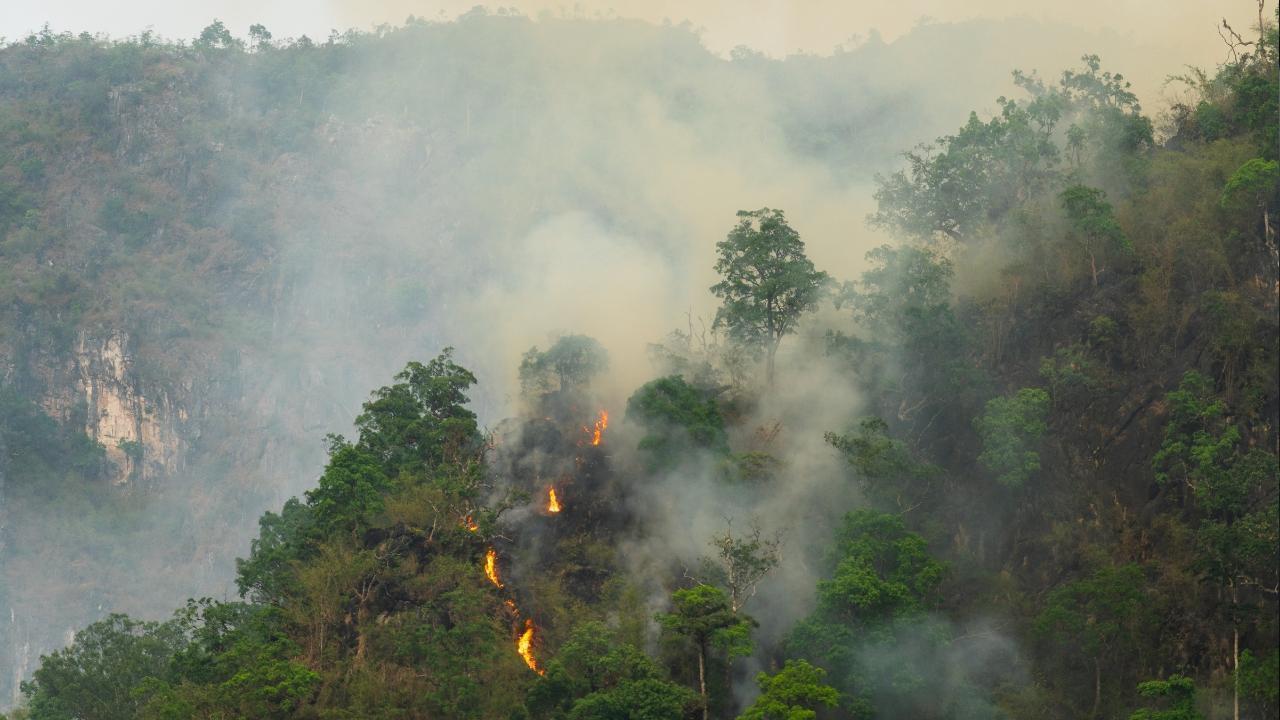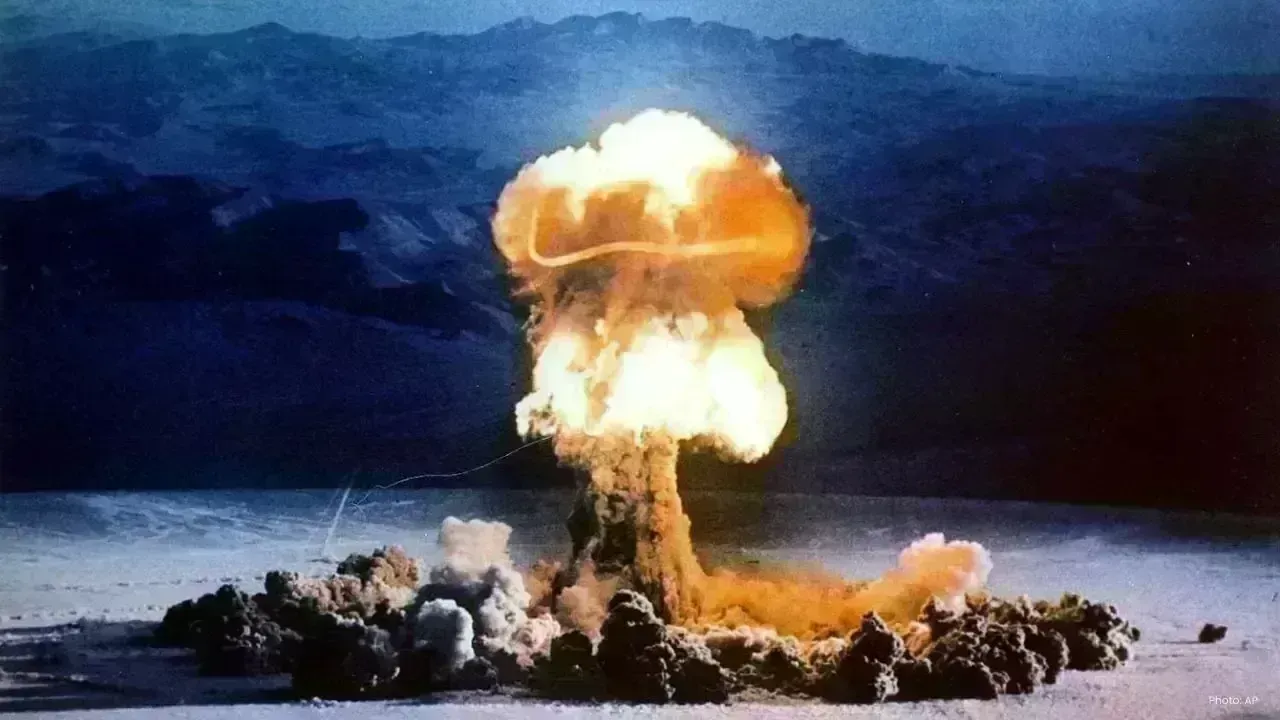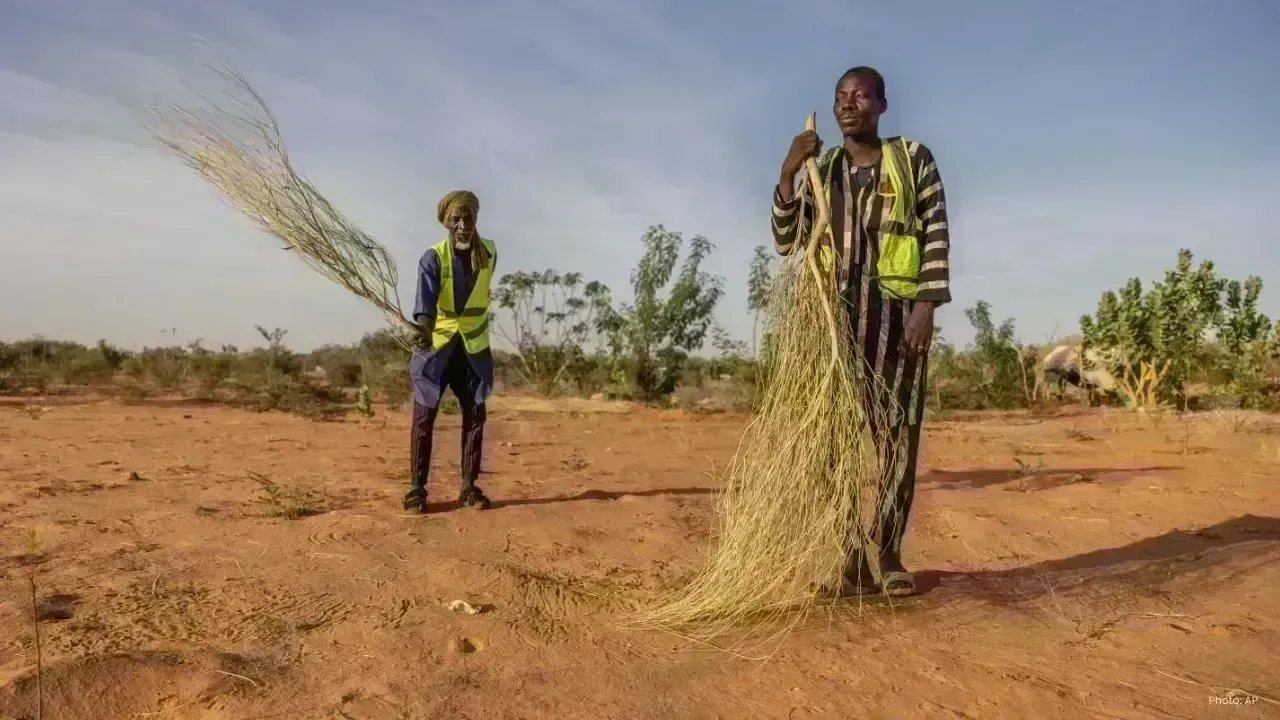
Post by : Raina Al-Fahim
The year 2025 has delivered a wildfire season unlike any in living memory. While fires are a natural phenomenon, this year’s blazes have been different: larger, faster, hotter, and more destructive than anything modern fire services have faced before. Across continents, millions of hectares of land were reduced to ash, thousands of families lost their homes, and entire ecosystems were destroyed in weeks.
From the pine-filled hills of Spain to the rugged Canadian forests, from California’s coastlines to the fragile landscapes of Asia and Australia, wildfires turned thriving communities into blackened wastelands. What was once an annual environmental challenge grew into a global humanitarian and ecological crisis.
The sight of orange-red skies, smoke-plagued cities, and endless lines of exhausted firefighters has left the world not only saddened but alarmed. The record-breaking damage is more than a tragic story of loss; it is a wakeup call.
This wildfire season demands deeper reflection. Why did the fires become so powerful? What role is climate change playing? What are the costs—for people, economies, ecosystems, and health? And most importantly, what must humanity do to prevent the future from burning as fiercely as the present?
A Record-Breaking Crisis: Scope and Scale of Destruction
By mid-2025, experts reported the largest area burned globally in decades. Canada, usually known for its vast green forests, lost millions of acres. The western United States, particularly California and Oregon, once again became epicenters of destruction, with towns wiped out in days. Europe suffered heavily too, especially the Mediterranean, where strong winds and scorching heat created firestorms that raced through holiday villages and farmland.
The speed of these blazes shocked authorities. Witnesses spoke of flames advancing faster than vehicles could outrun. Drought conditions had left vegetation tinder-dry; a single spark—whether from lightning, electric faults, or human activity—quickly grew into uncontrollable blazes.
The length and intensity of this season were equally disturbing. Instead of peaking in late summer, fires raged uninterrupted for months. Entire countries used up firefighting budgets, borrowed equipment from neighbors, and still struggled.
Satellite images captured massive smoke plumes stretching thousands of kilometers, spreading pollution to cities far beyond the flames. In some cases, flights were canceled as smoke drifted across borders.
This was not normal wildfire behavior—it was a new era of mega-fires that experts believe will keep returning if bold global action is not taken.
The Human Face of the Disaster
Behind the numbers lie human tragedies. Thousands of families were suddenly displaced, losing not only homes but also personal histories, memories, and identities tied to their land. Emergency shelters overflowed with terrified evacuees, many unsure if they would ever return home.
Older citizens faced the greatest danger. Those unable to move quickly became trapped, while health workers risked their lives rescuing them. For children, the trauma is lasting—many watched their homes burn or lived for weeks under Sulphur-gray skies, fearing more flames would return.
Firefighters became the heroes of the season. They worked continuously in searing heat, creating barriers against advancing walls of flame. Many were injured; some gave their lives doing their duty. Their bravery is unquestionable, but their sacrifice underlines a painful truth: our systems are unprepared for disasters of this scale.
Communities also showed resilience. Local volunteers joined firefighting efforts, neighbors opened homes to evacuees, and charities offered food and relief. Yet even amid this spirit of unity, the emotional toll remains heavy. Wildfire survivors have not just lost property; they are grieving for a way of life destroyed in weeks.
Ecological and Environmental Impact
Wildfires are not only human tragedies—they are ecological disasters. This year, some of the world’s most precious habitats were devastated. Ancient woodlands, rare plant species, and fragile ecosystems were lost. Wildlife perished in huge numbers, while survivors were left wandering burned landscapes with nowhere to feed or shelter.
Forests play a vital role in regulating climate, absorbing carbon dioxide, and providing oxygen. But during 2025, the fires emitted gigatons of carbon back into the atmosphere, worsening global warming. Scientists warn this is a vicious cycle: hotter climates fuel worse fires, and fires release emissions that heat the planet further.
Rivers, lakes, and soils near burned regions were polluted by ash and debris. Aquatic life suffered as water sources turned toxic. Agricultural zones lost biodiversity and soil fertility, a setback that could take years to repair.
What once took decades to grow was lost in hours. The environmental scars will remain long after the last embers are extinguished—reminding us how easily nature’s balance can tip toward disaster.
Economic Costs: Farms, Cities, and Industry in Flames
The global economic damage of the 2025 wildfires is staggering. Farms were destroyed, with crops turned to ash and livestock killed. Farmers in Southern Europe and North America estimated billions in losses, threatening food supply chains already stretched thin by global challenges.
Entire towns faced bankruptcy. Small businesses, factories, and shops could not reopen. Insurance companies reported claims on a historic scale, leaving questions about whether they can survive another disaster season of this magnitude.
Tourism—vital for countries like Greece, Spain, Italy, and parts of the U.S.—was severely damaged. Resorts closed; flights were disrupted; travelers canceled trips. For communities relying on seasonal visitors, this was not only a summer lost but a long-term crisis.
Rebuilding costs will climb for decades, but some damages are beyond money’s measure. How does one calculate the worth of centuries-old olive groves in Italy or the loss of California’s redwoods?
Health and Air Quality Emergency
If the flames did not reach people, the smoke did. Cities hundreds of kilometers away experienced toxic skies for weeks. The World Health Organization warned that 2025’s fires created an air pollution emergency.
Hospitals reported surges in respiratory illnesses, asthma, and heart problems. Children and the elderly were most at risk. Outdoor workers faced dangerous exposure, forcing industries to shut temporarily.
The psychological impact is equally severe. Weeks spent under darkened skies led to stress, depression, and anxiety across fire zones. Researchers warn of a “mental health crisis in waiting” as survivors and affected communities cope with trauma.
Smoke particles are known to travel across oceans, meaning the health impacts stretched far beyond the immediate fire zones, affecting millions worldwide.
Climate Change Connection: Why Fires Are Getting Worse
Scientists are clear: climate change is the driving force behind these supercharged wildfires. Hotter summers, prolonged droughts, rising global temperatures, and erratic weather patterns are making conditions ripe for fire.
This year, multiple regions reported record heatwaves. Vegetation dried earlier and burned faster. Once-seasonal rains either came too little or too late. Lightning strikes, intensified by storm activity, became frequent ignition sources.
The link between uncontrolled wildfires and climate change is a feedback loop: hotter conditions breed bigger fires, and bigger fires release more greenhouse gases that heat the planet further. Researchers describe this as a dangerous tipping point, where each disaster accelerates the next.
Without urgent global cooperation—cutting emissions, investing in resilient ecosystems, and preparing communities—the future promises even deadlier fire seasons.
Government Response: Relief and Shortcomings
Governments acted, but were they prepared? In many countries, response efforts included mass evacuations, financial aid packages, and international cooperation. Neighboring nations sent firefighting aircraft, equipment, and emergency experts to support overwhelmed forces.
Yet, shortcomings are apparent. Many communities complained that warnings came too late. Firefighting teams were understaffed and underfunded. Relief funds trickled slowly, leaving survivors struggling to restart their lives.
This season shows that reactive policies are not enough. Governments must build preventive strategies: creating buffer zones, improving early-warning systems, educating communities, and investing heavily in climate adaptation.
Global Perspective: Fires Across Continents
This disaster was not local—it was global. Fires burned in the Americas, Europe, Asia, Australia, and Africa. Each region faced unique challenges, but the pattern remained the same: hotter weather, drier vegetation, faster flames.
International aid showed solidarity, but experts warn that as wildfires increase everywhere, countries may not always have resources to spare. The 2025 wildfire season proved that fire is not a regional crisis—it is a global emergency demanding international cooperation.










Globe Soccer Awards 2025 Finalists Include PSG and Cristiano Ronaldo
GLOBE SOCCER Awards 2025 finalists are out after 30 million fan votes, with PSG stars, top clubs and

Google Gemini Web App Adds Opal Tool for Building Mini AI Apps
Google adds Opal to Gemini web app, letting users make mini apps called Gems using simple prompts wi

Shraddha Kapoor Praises Crew Behind Dhurandhar Film Success
Shraddha Kapoor praises the unseen technicians of Dhurandhar, lauds director Aditya Dhar, and calls

Truecaller Launches Free AI Voicemail with Spam Protection for Android
Truecaller launches free AI voicemail for Android in India with instant transcription, spam protecti

FIFA Confirms First Women’s Club World Cup Scheduled for 2028
FIFA announces the first Women’s Club World Cup in January 2028 with 16 teams, group stages, and glo

Buck Rogers Star Gil Gerard Dies at 82 After Cancer Battle
Gil Gerard, famous for playing Buck Rogers, has died at 82 after cancer. He was known for his sci-fi